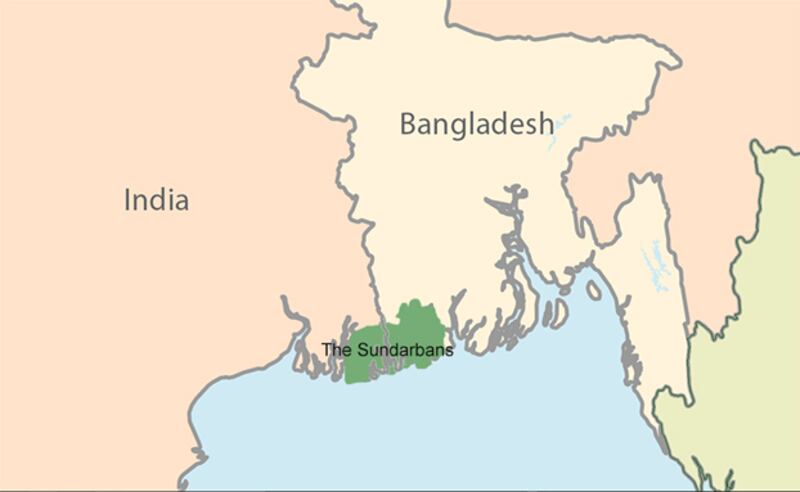Unregulated tourism and rapidly increasing temperatures are posing “irreversible damage” to the Sundarbans biosphere reserve, one of the largest mangrove habitats in the world, environmental groups warn.
Uncontrolled tourism is polluting the reserve, which is shared by India and Bangladesh, to an extent that is “beyond rectification,” Belinda Wright, executive director of the Wildlife Protection Society of India (WPSI), told BenarNews.
“Tourism, especially for tiger viewing, is increasing exponentially in the area and needs to be monitored. It is causing major pollution, as huge quantities of plastic material and other debris are dumped into the water,” she said.
The Sundarbans, a delta of the Ganga-Brahmaputra-Meghna river basin, is spread over 9,630 square km (3,718 square miles).
The Indian side of Sundarbans covers a 4,000-square-km (1,544-square-mile) area with a population of around 5 million.
Out of 102 islands within the Sundarbans, 54 are inhabited while 48 are forested. The forested part has three wildlife sanctuaries and a national park, designated as a UNESCO World Heritage Site.

‘A heightened state of danger’
The largest habitat of the Royal Bengal Tiger, the Sundarbans is home to five critically endangered reptiles, including the Hawksbill Sea Turtle and River Terrapin.
The endangered and near-threatened species in Sundarbans include the Asian Giant Softshell Turtle, Indian Rock Python, King Cobra, Greater Adjutant Stork, Black-headed Ibis, Fishing Cat and Gangetic Dolphin.
According to official figures, about 175,000 tourists visited the Sundarbans tiger reserve, while another 42,000 people visited the biosphere reserve in 2015.
Besides large-scale tourism, climate change is also posing a threat to Sundarbans, according to World Wildlife Fund-India (WWF-India).
A Climate Adaptation Report released by the group warned that Sundarbans was “already in the midst of a heightened state of danger.”
Atmospheric warming is causing thermal expansion of waters, inducing a sea-level rise of about 12 mm per year, the report said, adding that surface air temperatures over the Bay of Bengal have been rising at a rate of 0.019 degrees Celsius (0.034 degrees Fahrenheit) per year.
“Given the disproportionately heavy impact that climate change is expected to have on this delta area, the need to improve adaptive management and develop more appropriate solutions for this unique system has become acutely urgent,” the WWF report said.
Ratul Saha, who heads WWF’s Sundarbans Landscape team, said, “The current policies and patterns of development have to be completely revised, or else the situation would be catastrophic. The livelihoods and the survival of the people are at risk.”
Climate change has been found to be responsible for several cyclonic storms and increased frequency of extreme weather events in the recent past in the Sundarbans, Saha said. It has also been causing coastal erosion, change in embankments, acidification of waters and submergence of islands, he added.
Cross-border infiltration
Another major threat to the habitat is the increasing salinity in the waters, which is resisting the growth of mangroves, locals said.
Besides rising salinity levels, infiltration from Bangladesh into the Indian side of Sundarbans in West Bengal state is a matter of concern for wildlife conservationists.
“Infiltration does take place. We cannot dispute that. But these intruders come only during the honey season [April-May],” Pradeep Vyas, Chief Wildlife Warden in West Bengal told BenarNews.
“We are jointly patrolling the border areas with the Border Security Force and Indian Coast Guard to check infiltration,” he said.
Vyas said his department was doing its best to protect the habitat.
“We have banned the use of polythene bags. We are also trying to develop new tourism destinations to take pressure off the over-utilized parts [of the Sundarbans],” he said.
